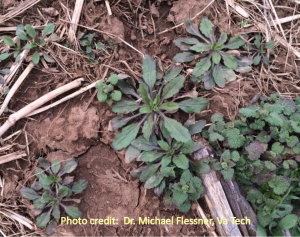The court ruling yesterday has given a devastating blow to farmers that are depending on the Roundup Ready 2 Xtend herbicide program for their soybean. There seems to be much discussion regarding clarification of this ruling, including when the ruling can take effect and a possible “existing stocks” provision.
Until the ambiguity around the decision is clarified, it’s worth thinking about seed choice. Assuming there is little that can be done about soybean already planted and growing other than alter your postemergence tank-mixes, you may have an opportunity to switch varieties for the upcoming double-crop soybean planting.
First and most important, do not change your variety selection if you have weeds that can be controlled without the addition of labeled dicamba products (Enginia, FeXapan, Xtendimax) to your herbicide program. The varieties that your have already selected are most likely to be best for your farm and will maximize your yield.
However, if you must add dicamba to your glyphosate to kill glyphosate-resistant marestail (hopefully you’ll take care of this weed before you plant), Palmer amaranth, or common ragweed, then you have some options with Liberty-Link, Enlist, Liberty-Link GT27, or a few other varieties that have stacked the GT and LL traits.
Like all herbicide-resistant traits, there are good varieties and there are some that don’t yield so well. I suggest that you refer to our Virginia Soybean Performance Tests 2019 or other good private and public resources to see how these have performed.


